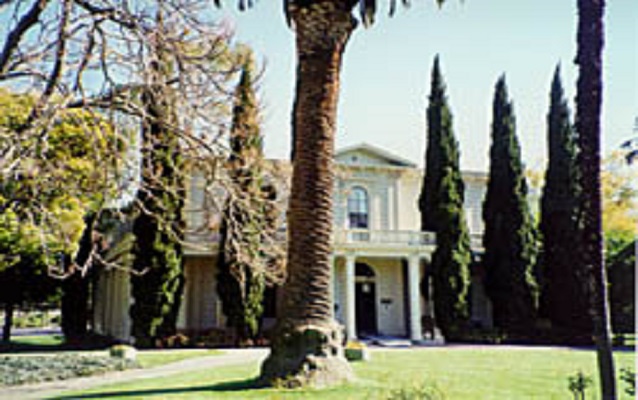Last updated: January 26, 2018
Place
James Lick Mill

Photograph by Judith Silva, courtesy of the City of Santa Clara
Quick Facts
Location:
305 Montague Expwy.
Significance:
ARCHITECTURE/ENGINEERING
Designation:
82002272
MANAGED BY:
The James Lick Mill a complex of buildings reflecting the varied uses of the property over its history. The major historical constructions are a brick granary and millpond from the original mill built by James Lick around 1855, the large house built by Lick around 1858 and a late Victorian-era office building. James Lick was born in Pennsylvania in 1796. He came to San Francisco in 1848 after a successful career as a piano builder in South America. From San Francisco Lick went to Santa Clara County. Lick built this Italianate mansion between 1858 and 1860 next to his flour mill. The mansion is constructed of native redwood featuring marvelous woodwork and imported marble fireplaces in each of its 24 rooms. This property was once part of the RanchoUlistac grant, a square league reaching from the Alviso shoreline southward and encompassing all the land between the Guadalupe and Saratoga Creeks. His farm background helped him realize the potential of the site for agricultural production. Around the mansion and mill, Lick developed a highly successful orchard operation and pioneered the introduction of new fruits and horticultural techniques. Imported specimens include the impressive cork oaks on the property planted by Lick himself.
Shrewd real estate investments at the time of the gold rush made Lick the richest man in California by 1873. When he died in 1876, James Lick left an estate of over three million dollars for various public projects, a major part of which went to establish Lick Observatory on Mount Hamilton where he is buried. Lick generously gave his estate to benefit charitable and scientific organizations. The Home of Benevolence, San Jose's orphanage for many years, was founded through one of Lick's grants and was later known as Eastfield Children's Home. It is now part of EMQ Children and Family Services. An 1882 fire destroyed the mill and in 1902 the Lick Mill complex was converted to the manufacture of alcohol. A series of owners, including Union Distilling, Western Grain and Sugar Products, Western Carbonic Gas, American Salt and Chemical, and Commercial Solvents and Chemical, manufactured a wide variety of products at this location. In the 1970s, the site was sold to a developer. The Lick Mansion and grounds were preserved and today the public can visit.
Shrewd real estate investments at the time of the gold rush made Lick the richest man in California by 1873. When he died in 1876, James Lick left an estate of over three million dollars for various public projects, a major part of which went to establish Lick Observatory on Mount Hamilton where he is buried. Lick generously gave his estate to benefit charitable and scientific organizations. The Home of Benevolence, San Jose's orphanage for many years, was founded through one of Lick's grants and was later known as Eastfield Children's Home. It is now part of EMQ Children and Family Services. An 1882 fire destroyed the mill and in 1902 the Lick Mill complex was converted to the manufacture of alcohol. A series of owners, including Union Distilling, Western Grain and Sugar Products, Western Carbonic Gas, American Salt and Chemical, and Commercial Solvents and Chemical, manufactured a wide variety of products at this location. In the 1970s, the site was sold to a developer. The Lick Mansion and grounds were preserved and today the public can visit.
